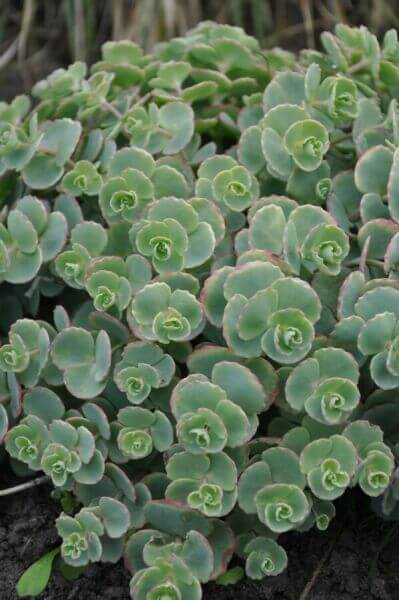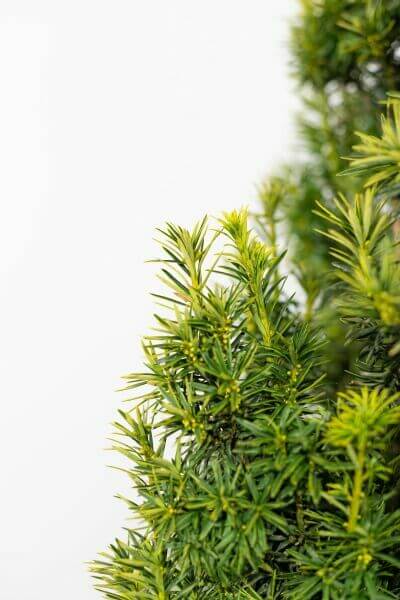Best Hedging Plants For Regular Pruning
Best Hedging Plants For Regular Pruning
Blog Article
Hedging Plants For Tall Screens
Improve your garden's allure with rich hedge ranges such as Yew (Taxus), Thuja, Laurel, Photinia, and Bamboo, celebrated for their structural integrity and ecological advantages.
Yew and Thuja supply evergreen coverage and winter season strength, while Laurel offers fast development and broad, fragrant leaves.
Photinia adds seasonal beauty with its vibrant red foliage, and Bamboo provides a low-maintenance, tranquil ambiance.
These hedges improve air quality, lower sound, and develop tranquil, private spaces.
Proper planting, spacing, and maintenance ensure vigorous development and environmental harmony.
Check out how these rich ranges can elevate your garden's charm and wellness.
Secret Takeaways
Transform Your Garden With Lush Hedge Varieties
- Select Yew for its dense, evergreen growth and unequaled durability.
- Go with Laurel for its fast growth and broad leaves, guaranteeing fast personal privacy.
- Pick Photinia for its lively seasonal foliage, which turns a striking dark red.
- Utilize Bamboo for a low-maintenance, winter-hardy hedge with visual appeal.
- Area plants 2-3 per meter and prune frequently for ideal development and health.
Popular Hedge Plants
When transforming a garden with rich hedge varieties, it's vital to think about popular hedge plants such as Yew, Thuja, Laurel, and Photinia due to their special characteristics and benefits.
Yew (Taxus) is highly esteemed for its longevity and dense, green growth, making it a prime choice for enduring landscapes.
Thuja is noted for its evergreen foliage and robust winter resilience.
Photinia includes seasonal vibrancy with red leaves that darken over time, developing vibrant visual appeal.
Laurel uses quick development and fragrant, broad leaves, suitable for quick privacy.
In Addition, Bamboo is an exceptional option for atmosphere, providing a low-maintenance, winter-hardy option that enhances the garden's aesthetic with its elegant, swaying walking canes.
These choices accommodate a variety of horticultural needs and preferences.
Advantages of Garden Hedges
Garden hedges provide a wide variety of advantages, making them an important addition to any landscape. These natural barriers are economical to execute and provide significant wind defense, improving air circulation and adding to noise decrease. The thick foliage of hedges like Thuja and Beech guarantees personal privacy by obstructing visibility, creating a tranquil and secluded environment.
Hedges likewise play a vital role in microclimate guideline, offering a stable environment that promotes plant growth and lessens temperature variations. Their elaborate leaf structures filter toxins, enhancing air quality and contributing to a much healthier garden community.
Moreover, hedges master noise reduction, soaking up and deflecting sound waves to lower ambient sound levels. This dual functionality of providing both acoustic and visual privacy improves the total tranquility and aesthetic appeal of any garden.
Planting and Upkeep Tips
For a successful hedge, precise preparation of the planting area is crucial. Guarantee the soil has correct pH and drainage to support strong root development.
Area the plants properly for the selected types. Water the hedge regularly during its preliminary development phase, adjusting as required with seasonal modifications.
Implement a systematic insect control and illness avoidance strategy, using chemical or natural treatments when essential. Regularly examine for aphids, mites, and fungal infections.
Apply mulch to maintain wetness and reduce weeds. Seasonal pruning promotes thick growth and air circulation, important for plant health.
Following these guidelines will assist you cultivate a lively, properly maintained hedge that improves the appeal of your garden.
Spacing and Trimming Guidelines
Spacing and Trimming Guidelines
Appropriate spacing and cutting are vital for cultivating healthy, aesthetically appealing hedges. Appropriate spacing guarantees each plant receives adequate nutrients, light, and airflow.
Follow these guidelines for ideal hedge maintenance:
- Spacing: Position hedge plants 2-3 plants per meter to encourage robust growth.
- Pruning Techniques: Regular pruning is essential for maintaining desired hedge height and shape. Trim new growth in summer and cut back older wood throughout winter season.
- Seasonal Care: Change trimming schedules and approaches according to seasonal requirements to guarantee plant health.
- Hedge Height: Regularly screen and trim to maintain the wanted hedge height and attain uniform aesthetic appeals.
Complying with these actions will ensure your hedge thrives, boosting both the appeal and performance of your garden.
Selecting the Right Hedge
Selecting the Right Hedge
Selecting the appropriate hedge includes assessing factors such as fully grown height, foliage density, and environmental strength. Effective hedge plant selection needs understanding each types' growth attributes and site-specific versatility.
For instance, Yew (Taxus) provides excellent durability and dense development, while Thuja is notable for its winter season durability. In addition, considering maintenance requirements is vital; fast-growing species like Laurel or Privet need regular cutting, whereas low-maintenance options like Bamboo or Ivy might be more effective for those seeking minimal upkeep.
Environmental elements such as soil type, light schedule, and wetness conditions need to likewise assist the choice process. This careful method makes sure the selected hedges will prosper, offering both practical and visual benefits to the garden landscape.
Shipment and Planting Recommendations
To ensure your hedge plants prosper, they need to be delivered by specialized couriers and planted promptly upon arrival.
Follow these important steps for effective planting:
- Soil Preparation: Improve the soil with raw material to improve drainage and nutrient material.
- Planting Depth: Produce a trench twice the width and equivalent to the depth of the root ball.
- Watering Methods: Water thoroughly after planting, keeping the soil regularly damp but not saturated.
- Mulching: Use a layer of mulch to keep moisture and reduce weeds.
Customer Assistance and Service
Given the crucial function of timely assistance in horticultural pursuits, our consumer support group is offered six days a week through telephone, email, and social networks to offer skilled recommendations and swiftly resolve any concerns. Their devotion to quick action times guarantees customer fulfillment by dealing with questions associated with plant health, optimum planting approaches, and maintenance schedules.

Availability
-------------------
Within 24 hours
Within 48 hours
This comprehensive assistance system, strengthened by a stellar 9.3/ 10 consumer score, highlights our commitment to boosting the gardening experience for each customer.
Often Asked Questions
For How Long Does It Take for Hedge Plants to Establish?
Hedge plants generally need one to 3 years to become totally established, with the specific duration differing by species and growing conditions.
Reliable care during this important duration is essential for robust development. Constant watering, watchful weed control, and proper fertilizer application are pivotal in promoting strong root advancement.
For instance, fast-growing species like Laurel may establish faster, while slower-growing varieties such as Yew might take longer. Diligent upkeep speeds up the facility procedure, leading to thick and healthy hedges.
What Are the very best Hedge Plants for Privacy?
The question of the best hedge plants for privacy includes evaluating evergreen and deciduous options.
Evergreen hedges like Thuja, Laurel, and Cypress supply year-round protection, making sure constant privacy.
In contrast, deciduous hedges such as Beech offer seasonal privacy, shedding leaves in chillier months.
Key maintenance tips for personal privacy hedges consist of regular cutting, fertilizing in spring, and proper spacing-- typically 2 to 3 plants per meter.
In addition, consistent watering and diligent weed elimination are crucial for promoting healthy, thick growth.
Can Hedge Plants Bring In Wildlife to My Garden?
Yes, hedge plants can draw in wildlife to your garden by offering important advantages like shelter, food, and nesting websites, thus boosting local biodiversity. Yew, holly, and laurel are exceptional for drawing in birds, while ivy supports a range of bugs.
Nevertheless, it's essential to keep in mind that there are some disadvantages, such as increased upkeep to handle insects and routine upkeep. Thoroughly selecting and preserving hedge ranges can help stabilize these downsides and benefits, eventually cultivating a vibrant and sustainable environment in your garden.
Are There Any Blooming Hedge Plants Available?
Yes, there are flowering hedge plants readily available that can enhance the charm of your garden.
For instance, Elaeagnus, also called Olive Willow, produces aromatic white flowers in the fall, including a touch of elegance.
Photinia, another popular choice, showcases dynamic red leaves that grow into a rich green, producing a vibrant visual result throughout the seasons.
To make sure these plants thrive, it's important to practice appropriate pruning strategies and seasonal upkeep, such as cutting new growth in the summer and cutting back in the winter.
These steps will assist keep the health and visual appeal of your blooming hedges.
How Do I Avoid Bugs in My Hedge Plants?
To avoid bugs in hedge plants, use natural bug control approaches and keep correct hedge care. Present beneficial insects like ladybugs, which prey on harmful pests, to create a well balanced environment.
Frequently check your hedges for indications of problem and quickly remove any affected parts to prevent the spread. Make sure the health of your hedges by using well balanced fertilizers and offering sufficient water.
Utilize mulching to retain soil wetness and correct spacing to minimize plant stress and promote robust growth. These practices jointly assist in lessening insect issues and maintaining a healthy hedge.
Conclusion
In essence, picking the best hedge varieties such as Yew, Thuja, and Laurel can change any garden into a relaxing sanctuary. These plants offer year-round plant, improve aesthetic appeal, and offer useful advantages like noise reduction and wind defense.
Appropriate planting methods, precise spacing, constant watering, and seasonal trimming are crucial for optimum growth.
Trusted delivery services and expert client assistance make sure a smooth experience from purchase to planting, making it easier than ever to elevate your outdoor space.
Garden hedges provide a wide variety of advantages, making them an hedging plants important addition to any landscape. These natural barriers are cost-effective to implement and provide considerable wind security, enhancing air blood circulation and contributing to noise decrease. The dense foliage of hedges like Thuja and Beech makes sure personal privacy by obstructing exposure, developing a remote and peaceful environment.

Pruning Methods: Routine pruning is vital for maintaining wanted hedge height and shape. Cut new growth in summer season and cut back older wood during winter season.
Report this page